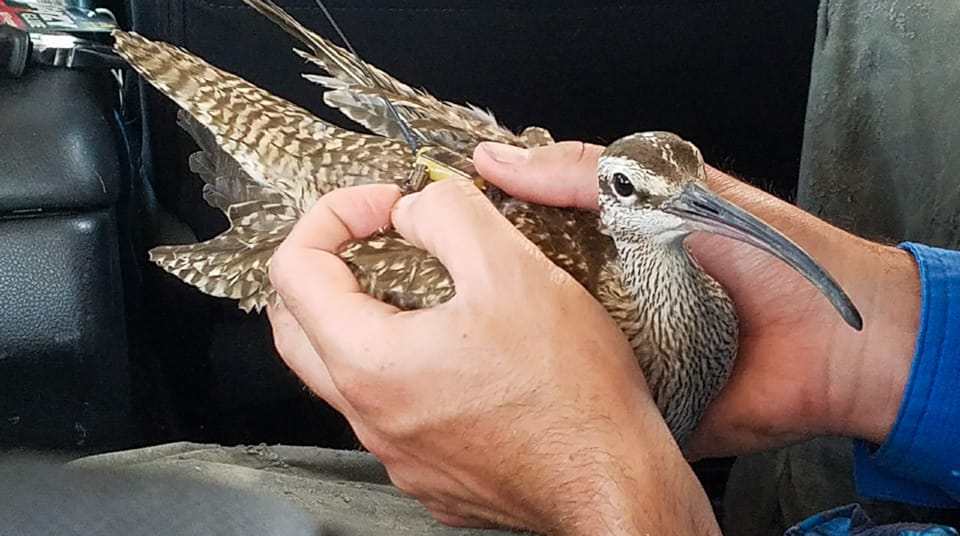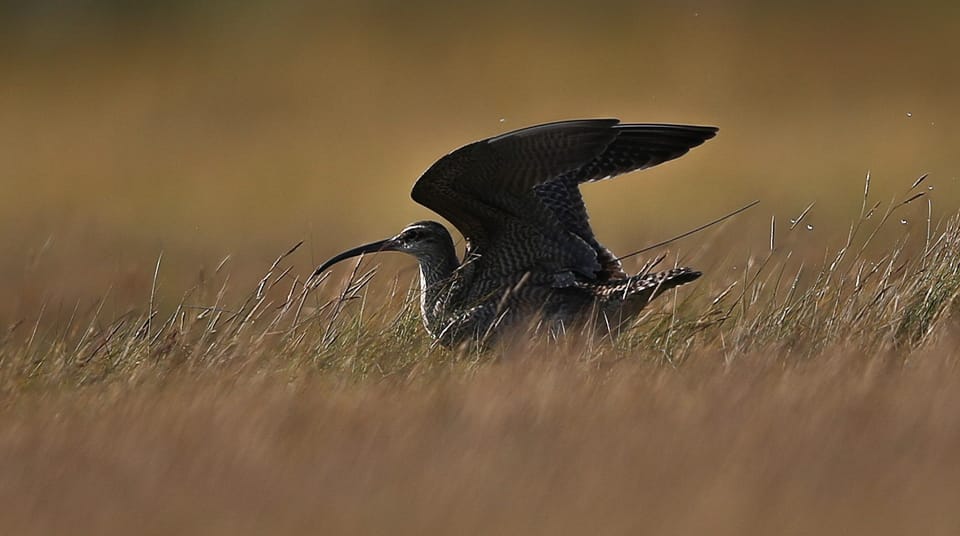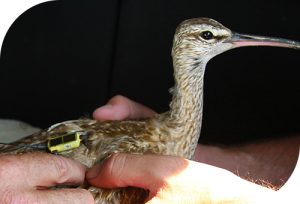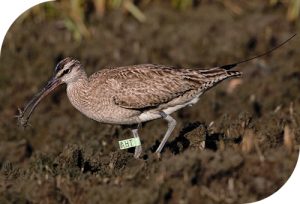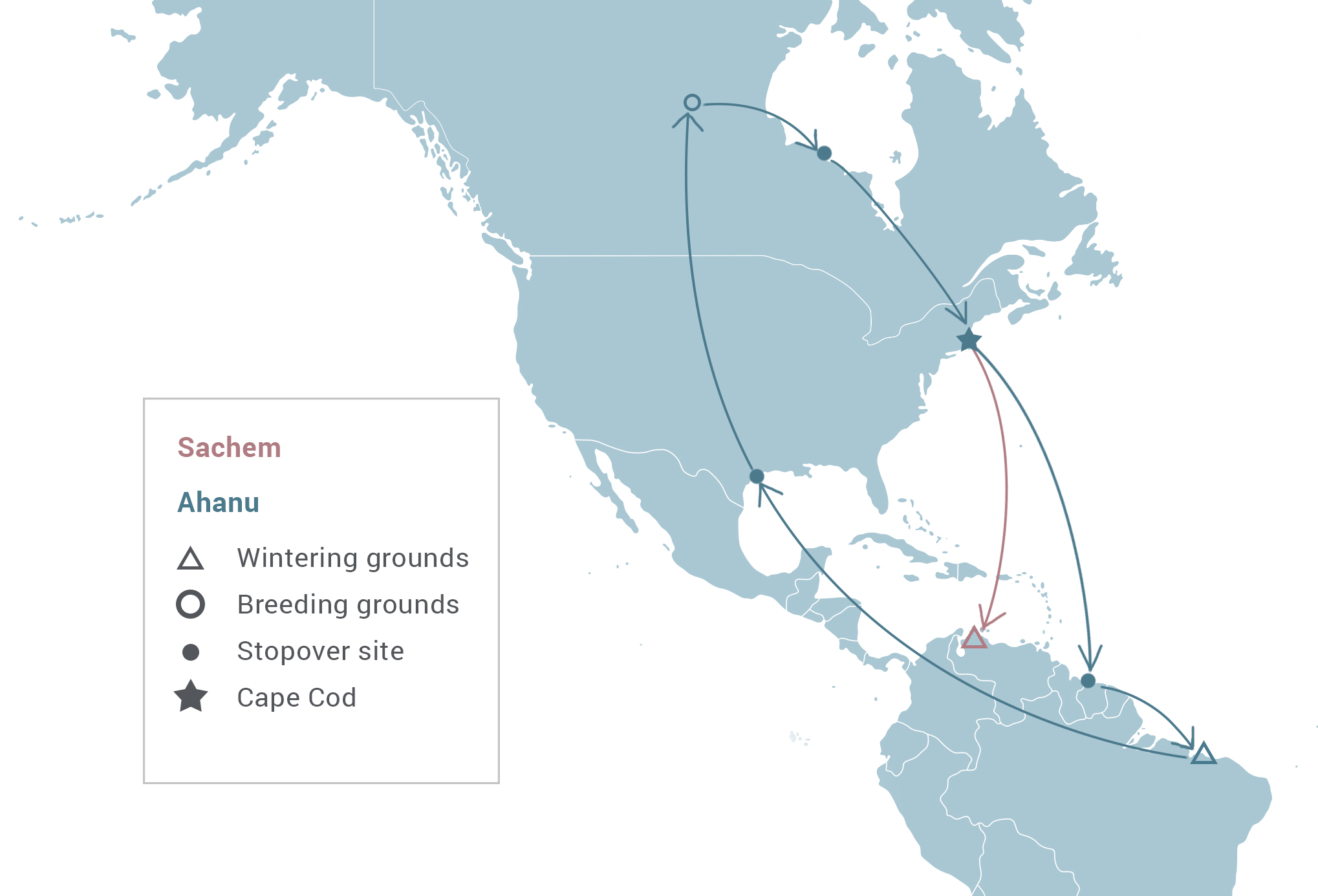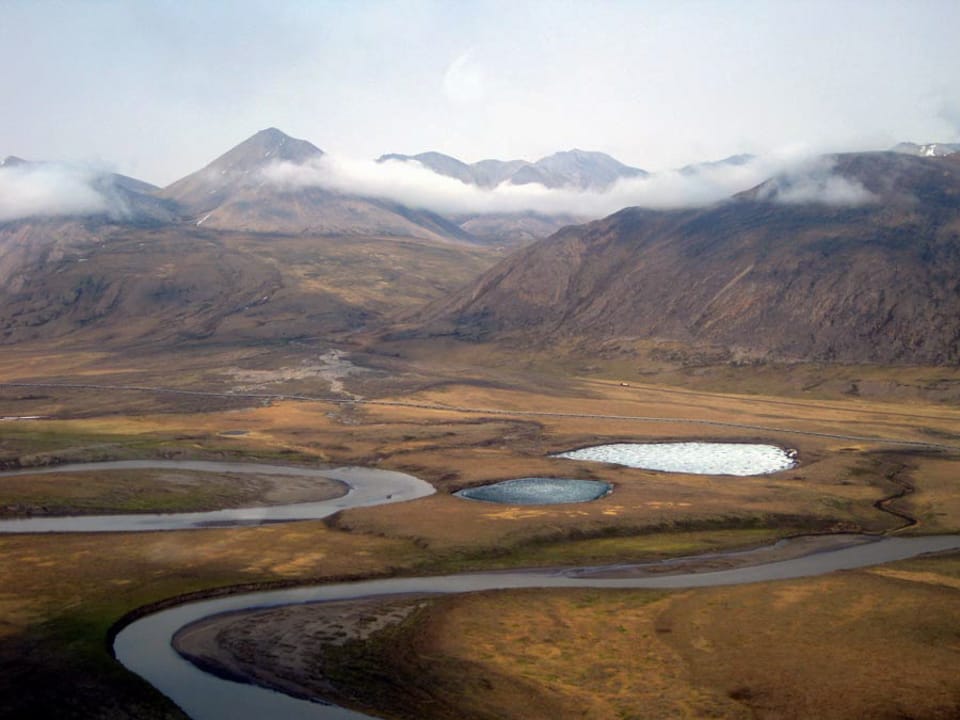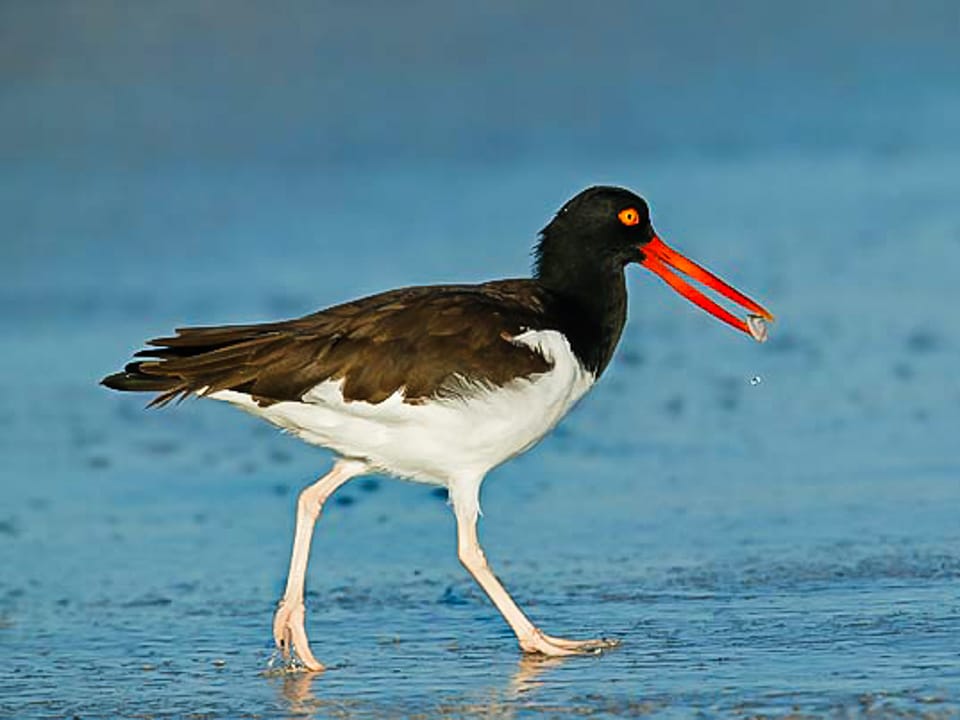Overview
Many populations of large, migratory shorebirds, including Whimbrel and other curlew, are experiencing significant declines at a global scale. These declines can be attributed to individual threats such as unregulated hunting on their wintering grounds, but most declines are the result of cumulative threats throughout the migratory life of each bird.
Manomet is studying Whimbrel (Numenius phaeopus) migrations to help understand where and when conservation actions are needed to improve the life-supporting conditions on the ground for this and all shorebirds. From July through late September, Whimbrel migrate southward from their Arctic and sub-Arctic breeding grounds and some spend up to a month with us along our coast. While in Massachusetts, Whimbrel spend almost all of their time in the saltmarshes feeding on fiddler crabs—an important staple in their diet. After replenishing their energy reserves, Whimbrel in Massachusetts will typically make a non-stop, trans-oceanic flight to their wintering grounds in the Caribbean Islands or all the way to the north coast of South America.
Whimbrel populations are particularly vulnerable to decline, given their adaptation to specific food resources, dependence on vulnerable coastal habitats, and exposure to hunting on their wintering grounds. Given these concerns, Manomet and our project partners have identified Whimbrel as a current priority for conservation and research. Through the use of new and emerging tracking technology, we are now able to understand more about what it takes to support Whimbrel populations and answer some of the remaining mysteries of the Whimbrel’s life history.





 Back to all
Back to all